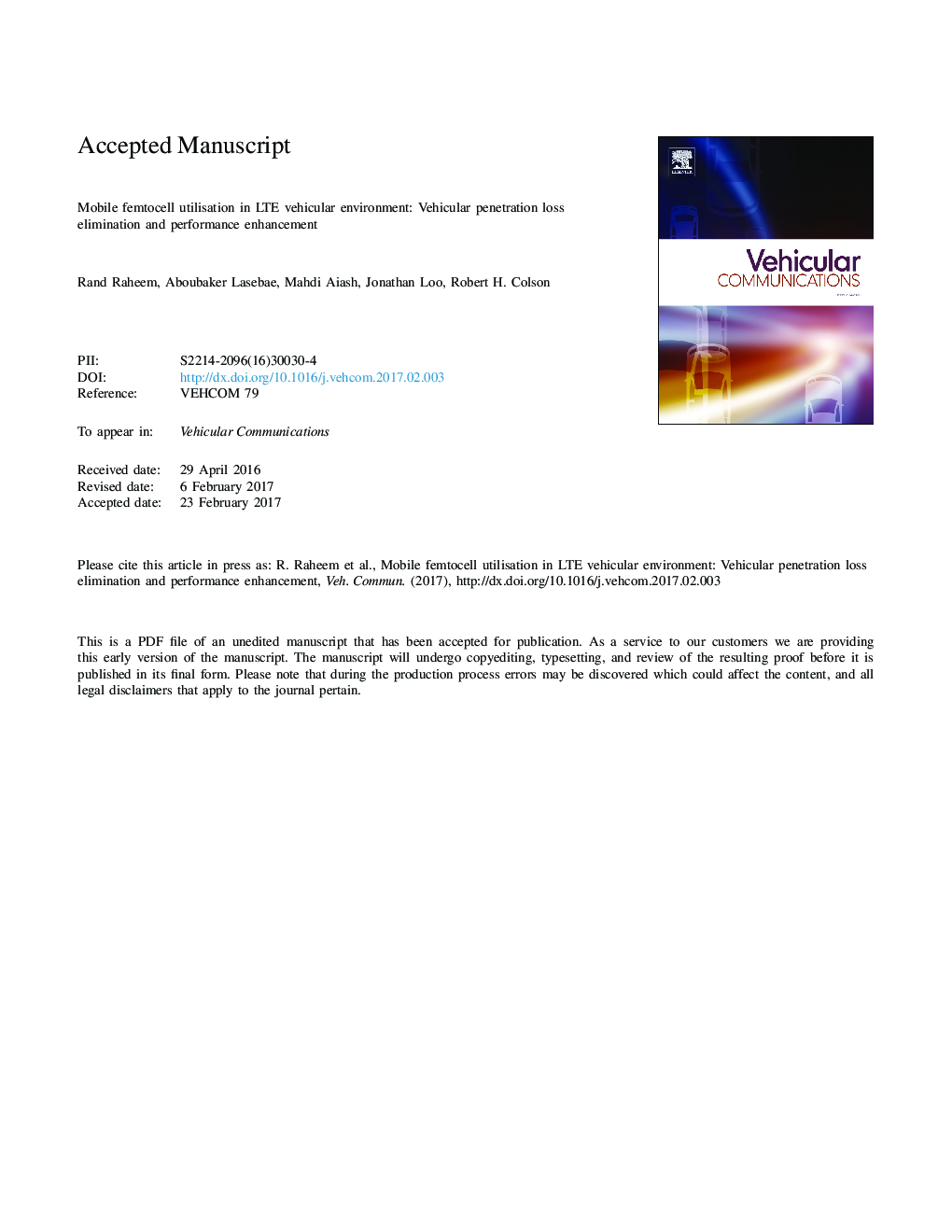| Article ID | Journal | Published Year | Pages | File Type |
|---|---|---|---|---|
| 4957781 | Vehicular Communications | 2017 | 14 Pages |
Abstract
Mobile computing is fast becoming a vital part of everyday life in which User Equipment (UE) demand being reachable anywhere and at anytime, as they spend much time travelling from one place to another, often by trains or buses. The ultimate aim of passengers is the ability to be connected to the Internet while they are moving from one place to another with their mobile devices. Providing indoor coverage on trains and buses directly with outdoor Base Stations (BSs) may not be a good solution due to the high density of use and path losses in the LTE network. This limitation can result in poor signal quality inside the train, and offering broadband services is not always possible. Clearly improvement to broadband access on buses and trains could be achieved by installing more BSs close to railway and bus routes and terminals. However, this solution is not ideal for the Internet Service Providers (ISPs) due to the high investment needed to deploy many more BSs. In addition, such a solution will introduce additional complexity by increasing the number of Handovers (HOs). This issue has focused the research community effort on developing solutions that take advantage of the existing wireless infrastructure without increasing the number of BSs. One method being considered is the development of more efficient methods and technologies to manage the UE's mobility in seamless ways. In this paper we propose adoption of Mobile Femtocell (Mobile-Femto) technology as a solution to mitigate the Vehicular Penetration Loss (VPL) and Path Loss, with consequent improvement to the vehicular UE's performance in LTE networks. Our results, using a Matlab simulation model, showed a noticeable improvement in the achieved Ergodic capacity by 5% under a VPL of 40 dB while 90% of vehicular UEs spectral efficiency has improved by 1.3 b/cu under a VPL of 25 dB. In addition, 80% of vehicular UEs have improved their throughput and SINR by 300 kb/s and 4 dB respectively after implementing the Mobile-Femto into the Macrocell in LTE networks.
Related Topics
Physical Sciences and Engineering
Computer Science
Computer Networks and Communications
Authors
Rand Raheem, Aboubaker Lasebae, Mahdi Aiash, Jonathan Loo, Robert H Colson,
